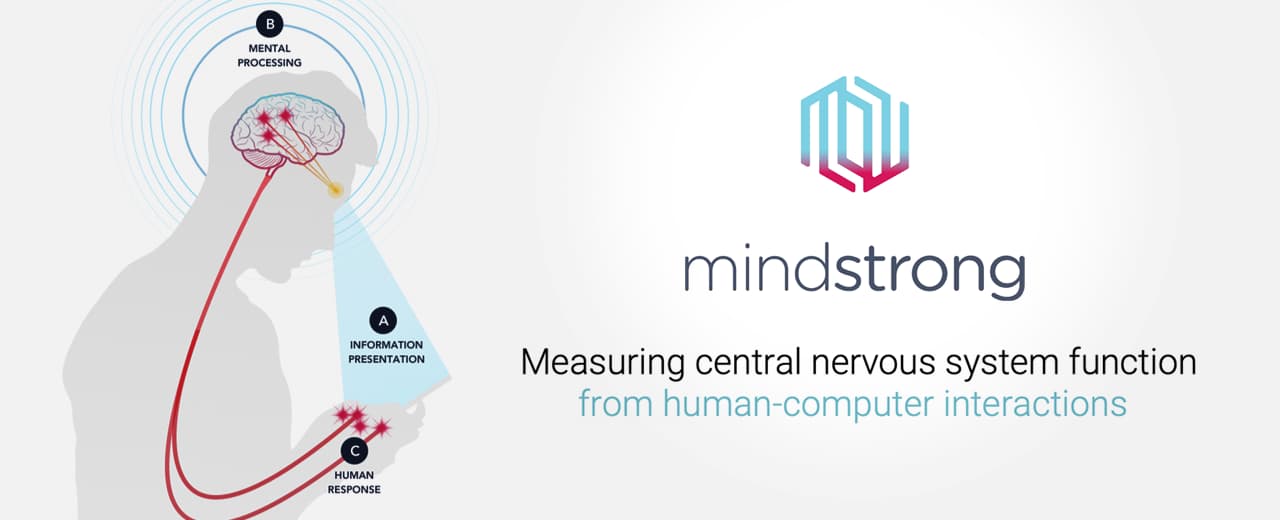Patient, Know Thyself: AI-powered Digital Brain Biomarkers

Millions of people suffer from mental health conditions such as bipolar disorder, psychosis, PTSD, and depression. Even though early intervention can save lives and help restore normal cognitive function, mental health care professionals are not very good at predicting when a patient may be at risk for one or more of these conditions. The problem is, there is no objective scientific measurement for most mental health conditions. Unlike physical medicine, where a doctor can just order a lab test, data for mental health conditions are gathered during office visits with a psychiatrist. Diagnostic tests in those cases are often nothing more than qualitative checklists.
What if we could deploy AI models that could predict when someone would need care for their condition from available data that is passively collected all the time?
A company called Mindstrong has developed AI models that can do just that. These models are based on Digital Brain Biomarkers that measure human cognition and mood. It turns out that the human-computer interactions required to operate a smartphone puts a cognitive load on the human, which provides a window into low-level cognitive functions. The system gathers data on how the user taps and scrolls and uses the keyboard, typically about 3,000 times a day.
Disruptions in these cognitive circuits are predictive of mental breakdowns. They are inferred by deep neural nets, from signals present in the normal daily activity of using one’s phone. From changes in this behavior, the model can predict clinically relevant disruptions to cognitive control and working memory.

For example, a patient under care for bipolar disorder and psychosis seemed to be doing OK, but her brain biomarkers indicated something was wrong. Her health care team was alerted (with her permission), and discussed the situation with her. She checked herself into the hospital for care, and got the treatment she needed to return to normal life. Mindstrong’s AI models predicted a breakdown, preventing a crisis and restoring health.
This story exemplifies a case where the task of clinically relevant prediction is generally not done well even by the best human experts. This means that you can’t just ask experts to label a data set and build an AI that imitates them. The brain biomarker data are quantitative, high-dimensional measurements of user activity — hard for humans to make sense of, but just the sort of data that modern AI models can handle. Psychiatrists can diagnose conditions when things go bad and a patient ends up in the hospital but they are not so good at predicting that in advance. The trick with AI is to define the objective function to make predictions about the future for a patient based on her brain biomarkers today.
The AI is going after a new skill, a superhuman talent for predicting a patient’s internal mental conditions by watching their daily activity on the phone. Tom got involved with founder Paul Dagum of Mindstrong when this ability to infer mental state from subtle changes in user behavior on the phone was just beginning to be understood. Around the same time, the social media companies were refining models that could predict psychological traits from similar data, and use it for behavioral targeting on the general population.
Wow, what a telling difference! Instead of downgrading mental health by manipulating human attention (think dopamine-driven social-media addictions), this AI is part of a new kind of mental health care team. With the new collaboration, the machine can predict things that people have never been able to do before, while the human practitioners are better informed to communicate with patients and intervene when treatment can do the most good.
Mindstrong’s new intelligent system is a vivid example of the power of Humanistic AI: harnessing a super-human, AI ability to understand human mental state to directly benefit the human subjects of that understanding. Patient, know thyself, with a little help from AI.